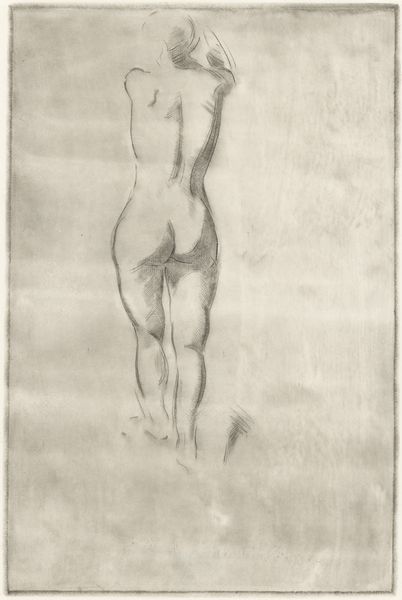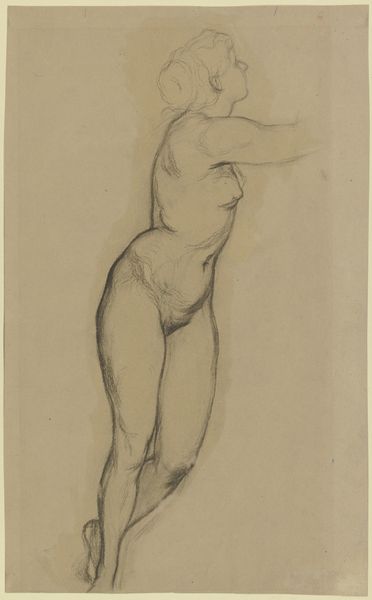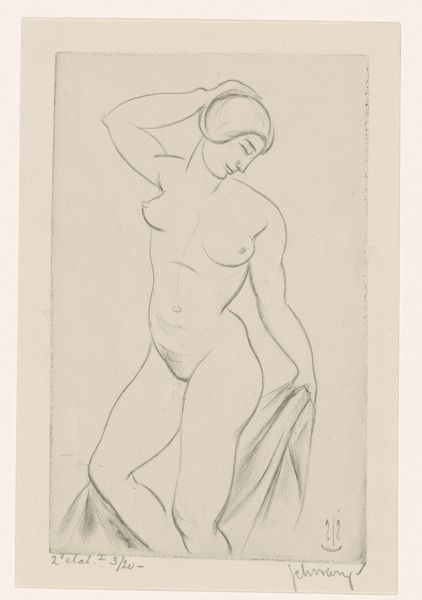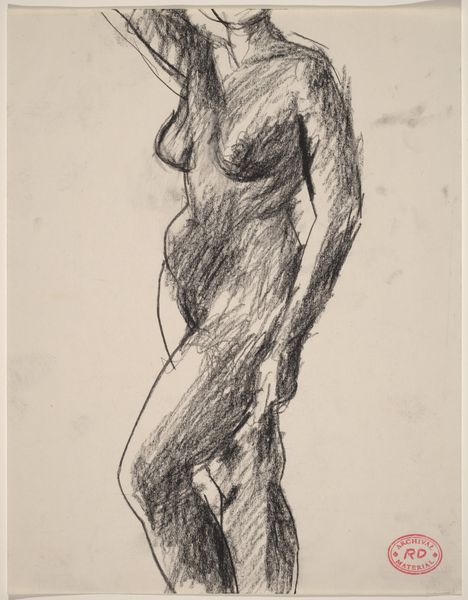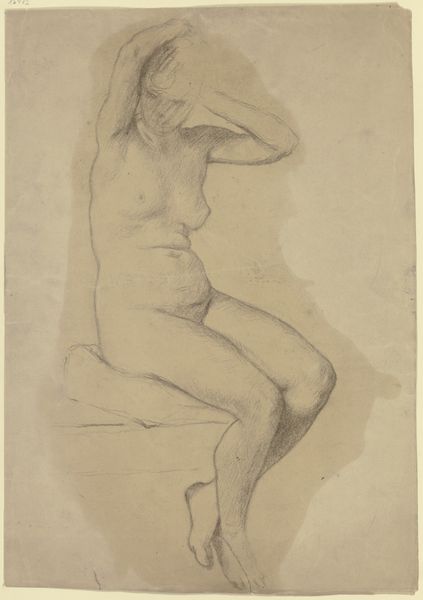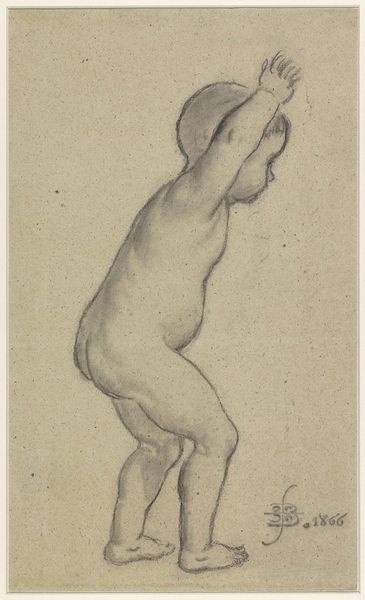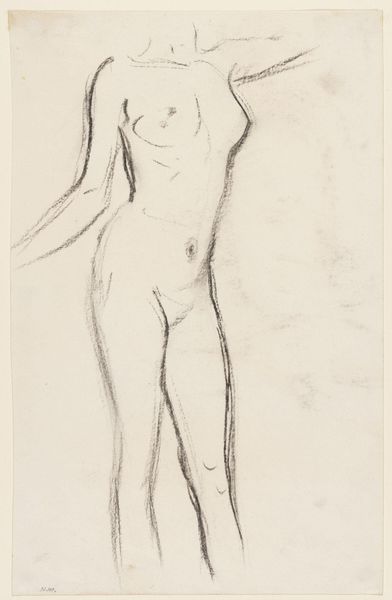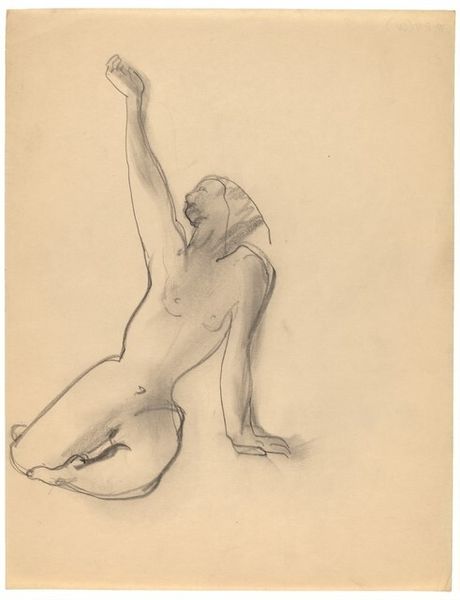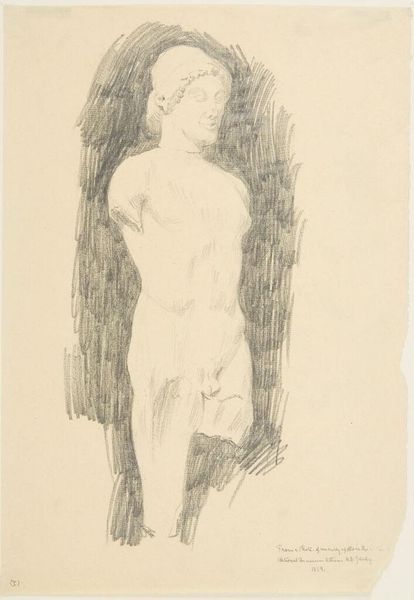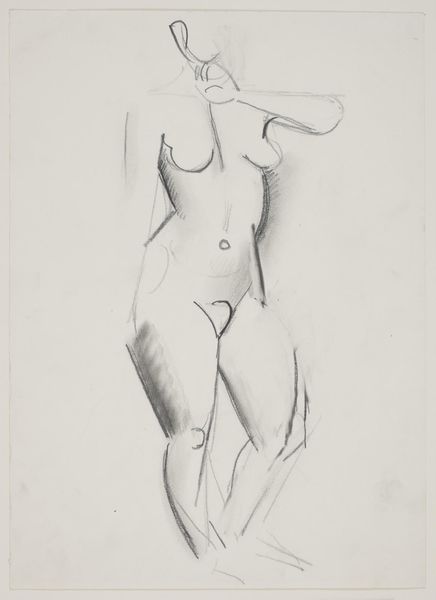
drawing, pencil
#
drawing
#
figuration
#
pencil drawing
#
pencil
#
expressionism
#
nude
Dimensions: height 628 mm, width 426 mm
Copyright: Rijks Museum: Open Domain
Curator: Standing before us, we have Jacob Bendien's pencil drawing, "Standing Nude Woman," created sometime between 1900 and 1931. What's your first take? Editor: There’s a ghostly, ethereal quality. She's reaching up, almost surrendering. A very tentative feeling. Like a figure caught in the balance between existing and dissolving. Curator: Tentative is spot on. Bendien, steeped in Expressionism, wasn't about photo-realism. This is about capturing a raw emotion, a felt experience. Look how he uses line, or the *lack* of distinct lines in places. Editor: Precisely. And the ambiguous use of light and shadow complicates it further, doesn’t it? Is it illumination or erasure? I immediately think about the constraints placed upon women's bodies throughout that period—or any period, frankly—and how this could reflect internal struggles with self-expression and societal expectations. Is she reaching *for* or is she resisting *against*? Curator: Good point. Considering Bendien's era, early 20th century Europe, burgeoning feminist movements were challenging traditional norms. But, looking beyond just the female form, the lack of precise detail, the haziness...it feels more universal, don’t you think? Editor: Yes, on one level, it speaks to that universal feeling of in-betweenness. And at the same time, who gets to be universalized, right? The dominant narrative tends to erase marginalized identities. Considering Bendien's biography, his personal experiences of societal outsider status— as a homosexual man—certainly would give layers to this. How did he view himself and his relation to society? Curator: Exactly, there's a fluidity in the pose that I read as vulnerability, which resonates universally. Also, to me, there's a sense of upward reach; she might be surrendering, as you said, or yearning for something…something transcendent, maybe? Bendien flirted with theosophy; the body, here, might even represent a pathway to spiritual awakening. Editor: Or, the body, itself, can be a site of spiritual resistance— an act of taking ownership. It’s always multifaceted. I guess the most compelling artworks hold these simultaneous possibilities. Curator: Right! And, even as we keep digging deeper, that ghostly figure keeps dancing just beyond our grasp, which, as far as I am concerned, makes it all worthwhile.
Comments
No comments
Be the first to comment and join the conversation on the ultimate creative platform.
